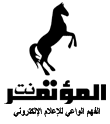By Adnan al-Qaisy - The Sana’ani religious chant, or inshad, is a unique art form, with social, cultural, and even political resonance. This kind of chant is performed by a chanter alone, without musical accompaniment, to commemorate special events. Topics of the chants range from praise for the Prophet to flirtation.
The chant consists of a poem and a mashrab, which is the section performed both by the chanter and the people attending an event, such as a wedding party. The chanter chants and the people repeat specific stanzas after him. The words of the chant and chanter are considered to be both a guide and a preacher, because they preach and guide people. The chant has spiritual symbolism, and has long been a Yemeni tradition.
It has so pervaded Yemeni life that it is a necessary part of just about any social occasion—weddings, the Prophet’s Birthday, birth parties, mourning sessions, and all manner of other occasions. It’s especially ingrained in Sana’ani life. “The Sana’ani chant has a magnificent place in our Yemeni life, and it expresses what is inside us,” said Ali al-Akwa’a, the head of Yemeni Chanters Association, the head of Arab Innovators Yemen office.
The Sana’ani chant also plays a significant role in the Hajj, the pilgrimage to Mecca made by Muslims. It uses melody to glorify and praise Allah, and is performed as the pilgrims travel to and from Mecca. There is no specific date for the beginning of chanting in Yemen, said al-Akwa. But most historians say that it is at least 700 years old. Prophet Mohammed’s followers from Mecca to Medina chanted during his reception in Medina. The chant was “Tala’a al-bader alaina,” or the full moon is appearing for us. Until about 40 years ago, the Sana’ani chant was only performed in Sana’a. But since then, it has spread to many governorates.
Therefore, anyone can find the Sana’ani chant in the wedding parties in Taiz, Raima, Ibb, and other governorates, said Jamil al-Qadhi, the general secretary of the Yemeni Chanters Association. But these chants have very little written history. They were traditionally memorized and passed orally from one generation to the next. For this reason, many of the poems have vanished over the years. But now, many researchers are trying to save the art from extinction. The Yemeni Chanters Association was founded in 1989, with a mission to collect and record poems, to preserve the chant’s heritage. In 2004 the Yemeni Chanters Association published a book of these pieces, called The Masterpieces of the Sana’ani Anthem.
The book has been divided into five sections including praise and commendation, exhortation, preaching, pure flirtation and occasions. The book contains around 300 poems and mashrabs, with about 700 different tunes. Among these is the biggest poem, consisting of 500 stanzas. The poem, which praises the Prophet, has been called the Quran of poetry. It was written by the Imam al-Boissiri, and is one of the most popular poems chanted in Sana’a, said al-Qadhi. The Masterpieces of the Sana’ani Anthem is the first poetry book in the Yemeni library that contains a great number of the Sana’ani chants, preserving them from extinction and neglect.
The Yemeni Chanters Association aims to continue releasing other Yemeni chants, such as the Hadhrami chant, Tihami chant, Taizi chant, Raimi chant, and Harazi chant, as well as the chants of Hajja and al-Taweela, and every governorate or province that has a chant heritage, said al-Akwa’a. Sana’ani chants have always been among the best in the country, because of the eloquence of their words, the skill of the chanters, and the ability to perform a variety of poems, said Ali al-Matari, a chanter. Sana’ani chant is distinguished by many things.
It is performed without any musical instruments, even in modern times, because the original and traditional chants were performed this way. Thus, the chanters try not to use any kind of musical instruments, and they seek to appear in perfect uniforms, wearing traditional clothing to preserve the origin and tradition of the Sana’ani chant. If anyone tries to use any kind of musical accompaniment with the Sana’ani chant, it will spoil the taste of it, say chanters, and it will not be acceptable in Yemeni society. Not everyone feels the same way, however.
Al-Qadhi said that the Sana’ani chant may be accompanied with musical instruments, in a concession to modernism and open-mindedness. “Every tradition can be affected by the progress of time, and it can be changed or improved to meet the needs of people, and it may be acceptable to many people.” Another salient characteristic of the Sana’ni chant, is that its poems include pure flirtation, entreaty, and poems praising Allah’s Messenger, as well as Sufi poetry. The association, in cooperation with the Ministry of Information and the Public Institution for Radio and Television, has recorded a lot of mashrabs and tunes of the Sana’ani chant, said al-Akwa’a.
“We have hundreds and thousands of tunes of Yemeni chants. Some poems and mashrabs have three tunes and others have six tunes, this wealth of tunes in the Yemeni chanting poems is not found in any other nation.” The Yemeni Chanters Association is considered an international heritage group, recognized by UNESCO.
It is also working on a bulletin at home and abroad through its participation in many Arabic and international festivals, al-Qadhi said. Perhaps one day, visitors in European countries may be surprised to hear the Sana’ani chant performed at European parties, weddings, or restaurants.
Copyright 2002 - 2006 Yemen Observer
|

